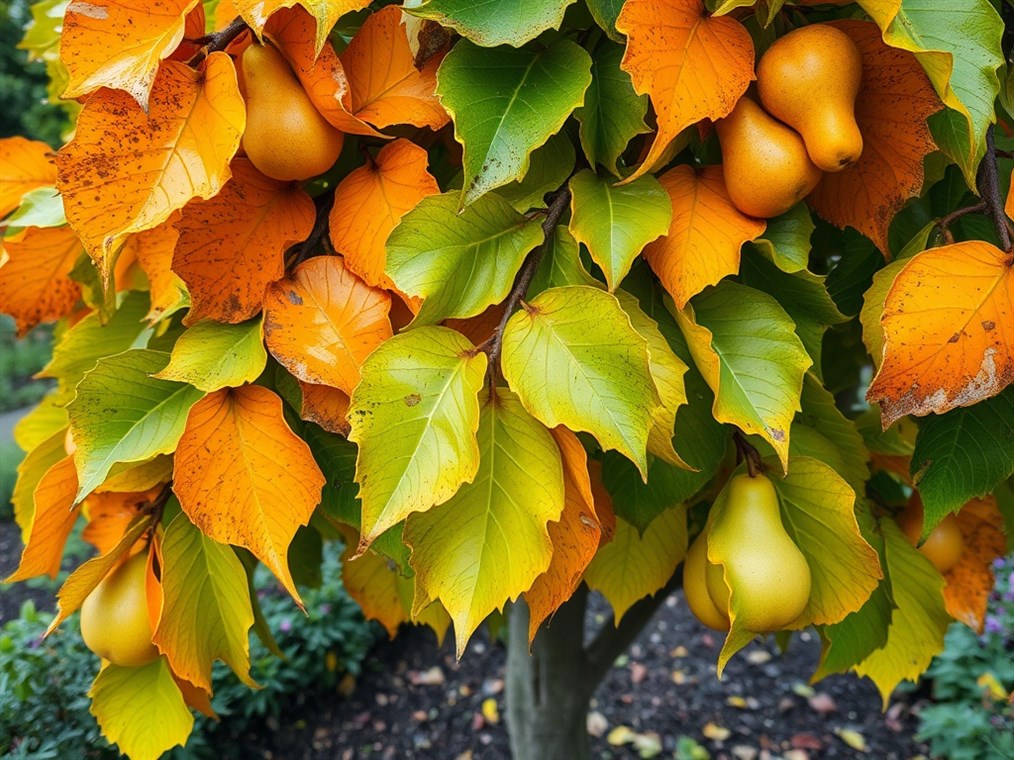Battling the Orange Invader: Your Guide to Kicking Pear Rust to the Curb
Pear rust. Just the name sounds nasty, right? And trust me, it is. This fungal disease can really do a number on your pear trees, turning their leaves into something resembling a Jackson Pollock painting gone wrong. But don’t despair! With a little know-how and some elbow grease, you can keep this pesky problem at bay and keep your pear trees happy and healthy.
So, what exactly is pear rust? Well, it’s a fungal disease caused by a few different fungi in the Gymnosporangium family. These guys are tricky, because they need two different hosts to complete their life cycle: your beloved pear tree and, usually, a juniper tree lurking somewhere nearby. Think of it as a botanical love triangle, but with decidedly less romance and a whole lot more orange spots.
Here’s the lowdown on how this whole thing works: The fungus spends the winter chilling out in galls on the juniper. Then, come springtime, when things start to warm up, these galls burst open, releasing a cloud of spores into the air. If those spores land on your pear tree, bam! Infection time. The pear leaves develop those telltale orange spots, and the cycle continues. It’s a real bummer, especially if you’re dreaming of a juicy pear harvest.
Now, how do you know if your pear tree has caught the rust? Keep an eye out for these telltale signs:
On Your Pear Tree:
- Early Spring: Look for bright orange or yellow spots popping up on the tops of the leaves. These aren’t subtle – they’re usually pretty noticeable.
- Late Spring/Early Summer: See those black dots in the middle of the orange spots? Those are called pycnia, and they’re another sign you’ve got rust.
- Summer: If the infected areas start to thicken and get bumpy, with weird wart-like things sticking out from the bottom of the leaves, that’s a sure sign of a more advanced infection. You might even see some funky tube-like projections on the fruit itself. Yikes!
- Late Summer/Fall: As the season winds down, those grey, hair-like projections appear on the underside of the leaves, releasing even more spores. If the infection is really bad, you might even see leaves dropping early.
On Your Juniper:
- Keep an eye on your junipers during wet weather in April and early May. That’s when you’ll see those telltale orange, jelly-like blobs swelling up on the branches. Gross, but at least you know what you’re dealing with.
Alright, so you’ve got rust. Now what? Don’t panic! Here’s your battle plan:
1. Wage War with Cultural Controls:
- Leaf Patrol: If you catch the infection early, pluck off those infected leaves and toss them in the trash. Don’t compost them, or you’ll just be spreading the problem around.
- Juniper Pruning: Give your junipers a haircut, removing any branches that show signs of rust.
- Strategic Separation: This one’s tough, but if you can, try to keep your pear and juniper trees as far apart as possible. We’re talking hundreds, even thousands, of feet. Those spores can travel a surprising distance!
- Boost Immunity: A healthy tree is a happy tree, and a happy tree is better equipped to fight off disease. Make sure your pear trees are getting enough water, fertilizer, and mulch.
- Choose Your Battles: When planting new trees, consider choosing pear varieties that are known to be more resistant to rust.
2. Bring in the Big Guns: Fungicides (If Necessary):
- Prevention is Key: If you’ve had rust problems in the past, consider using a preventative fungicide.
- Timing is Everything: Start spraying as soon as the leaves and blooms start to emerge, and keep it up every week or two, especially when it’s rainy.
- Go Systemic: Systemic fungicides are absorbed by the plant, providing protection from the inside out.
- Mix It Up: Don’t use the same fungicide every time, or the fungus will develop resistance. Rotate between different types.
- Fungicide Options:
- Copper-based fungicides: A good organic option.
- Neem Oil: Another natural choice that can help.
- Propiconazole: A systemic fungicide for longer-lasting protection.
- Chlorothalonil: A contact fungicide that works best when applied early.
- Myclobutanil: A preventative fungicide for homeowners.
- Triadimefon: Another systemic option.
- Important Note: Always read and follow the label instructions carefully! And remember, some experts don’t recommend chemical controls at all, so do your research and talk to your local extension agent.
3. Don’t Forget the Juniper:
- Fall Treatment: Give your junipers a fungicide treatment in the fall to protect them from infection.
- The Ultimate Solution: If you’re really serious about getting rid of rust, consider removing the junipers altogether. I know, it’s drastic, but it’s the most effective way to break the disease cycle.
4. Try Some Home Remedies
- Baking Soda Spray: Mix a teaspoon of baking soda with a bit of vegetable oil and water, and spray it on your trees.
- Horticultural Vinegar: A stronger version of household vinegar that can help manage the disease.
Prevention is Better Than Cure
- Plant Smart: Choose rust-resistant pear varieties if you can.
- Air It Out: Make sure your trees have good air circulation to reduce humidity.
- Water Wisely: Avoid watering from above, as this creates a breeding ground for fungus.
Pear rust can be a pain, but it’s definitely not a death sentence for your pear trees. By taking a proactive approach and using a combination of these strategies, you can keep your trees healthy and enjoy a delicious harvest for years to come. Happy gardening!

